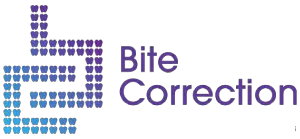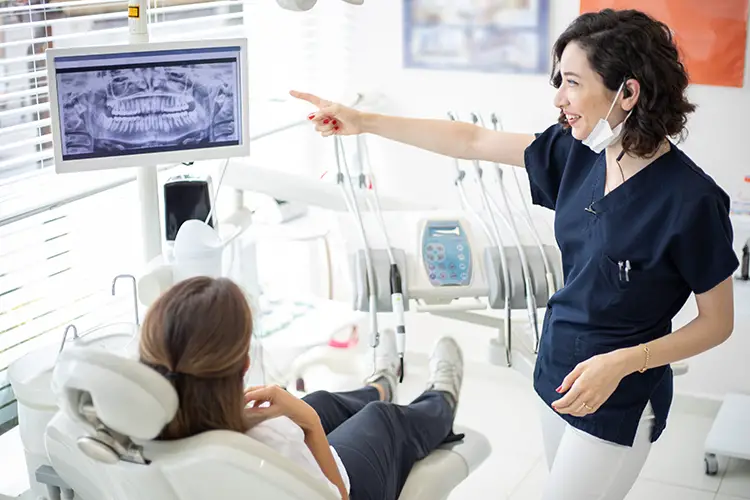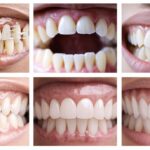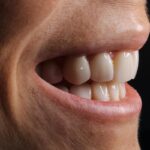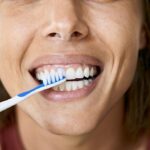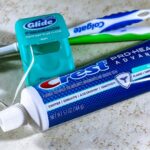“Out of the crooked timber of humanity, no straight thing was ever made.” At least that’s how Immanuel Kant, an 18th-century German philosopher felt about perfection, but then again he wasn’t an orthodontist. Orthodontists regularly use bite correction to repair what nature on its own cannot give us; perfectly straight teeth. If your bite is misaligned and you’re wishing for a straighter smile, there are several non-surgical bite correction treatments that may just be the “perfect” option for you.
The shape of your face and the proportions of your facial profile are determined by a healthy jaw and bite position. This means that through bite correction, particularly overbite and underbite correction, we can make a weak jaw or chin appear stronger, a large jaw or chin appear smaller, thin lips that are fuller, relieve TMJ pain and headaches, provide permanent facial support, reverse premature aging, and give the face a more youthful shape. – Dr. Sam Muslin
In dental terminology, a bite, whether an overbite or underbite, is called a malocclusion, and may not even be obvious to you or to others. So, why consider bite correction? One major reason to consider a realignment of a protruding overbite or underbite, is that perfectly aligned teeth are easier to keep clean. With that in mind, straighter teeth are unlikely to cause dental problems in the future. With a regular dental regimen, clean teeth keep dental decay and periodontal disease away. Rhyming aside, non-surgical bite correction can alleviate strain on jaws, teeth and jaw muscles when misalignment causes undue pressure or increases the erosion of tooth enamel. Without treatment, misalignment can also lead to Temporomandibular joint disorders (TMJ or TMD), which affects jaw joints, facial muscles and surrounding tissues causing chronic pain.
Bite on This
During a routine dental exam, your regular dentist will have you bite down to check your teeth alignment. If there is a malocclusion, an overbite or underbite, that may cause problems for you in the future, your dentist may suggest panorex x-rays. These x-rays provide a panoramic view allowing dentist to examine your teeth and its relationship to your neck, jaw and head from different angles. The dentist may also take molds of your teeth and recommend an orthodontist to you.
While extreme cases of Class III malocclusion, such as a severe under bite or overbite, may require jaw surgery, the majority of cases can be addressed using any one of several non-surgical bite correction treatments:
- Orthodontics is probably the most common treatment for underbite and overbites. Using braces, retainers and other appliances, teeth are shifted into their proper positions over time. Generally, a process like this takes between 12 to 24 months. When treated early, alignment issues are easier to correct. In this situation, it’s common practice to treat malocclusion when a patient is a pre-teen or teenager since their jaws and teeth are still developing. On the other hand, dental professionals are seeing a resurgence of braces on adults. The length of treatment for adults basically depends upon the severity of the misalignment.
- Night Guards are custom-made molds of plastic that are worn at night. Patients who suffer from bruxism or teeth grinding, use night guards to reduce the wear and tear that grinding can cause Left untreated, bruxism can lead to a bad bite, not to mention gum recession.
- Tooth Reshaping or dental contouring is accomplished by adjusting rough or irregular teeth to evenly distribute the amount of pressure of your bite to improve not only its appearance but its function in the mouth. First the dentist will have you bite down on a piece of coated paper. You may be asked to bite down more than once and then move your teeth back and forth a little as you bite. The paper will leave small colored marks at the distinct points where your teeth touch. The dentist will then use a drill to mildly shape the contours or bite so that teeth touch properly to prevent unnecessary wear and tear.
- Replacement and Reconstruction of your natural teeth can repair existing damaged or worn teeth. Fillings are considered reconstruction as are crowns, bridges and implants. Reconstruction also includes correcting cracked or fractured teeth through dental bonding. The concept behind replacement and reconstruction is to not only correct a person’s smile in appearance but to avoid the deterioration of the teeth and jaw by maintaining its original and natural structure.
- Non-Surgical Bite Correction is a new treatment option which relies on VENLAY® restorations and the Face Lift Dentistry® method. Cost is still a factor but considering that most bite correction without surgery treatments can be completed almost pain free within 2 or 3 weeks, this becomes an attractive solution.
It’s important to understand that teeth will always shift and move throughout your lifetime. The degree of movement is hardly noticeable, but with regular dental visits and good oral hygiene there is no reason why small and slight adjustments down the road will be of concern. The goal of any orthodontist is to have not only a perfect smile you can be proud of, but to give you a great foundation of perfect oral health moving forward. And that’s something that’s worth your piece of mind.
